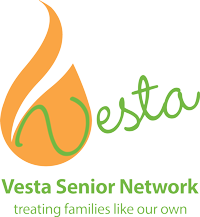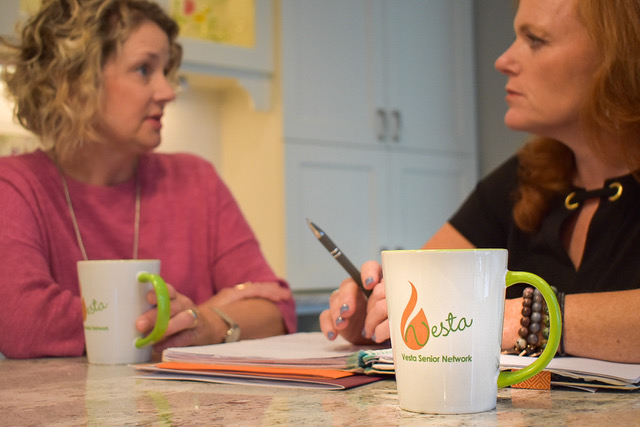Assisted Living or living in a community setting has some wonderful benefits. We are social animals, and being around other people to engage in conversation, to laugh and cry with and share daily moments- is without a doubt, meaningful and important. Being alone in our homes, as many of our elders are, with only the TV for company and maybe an occasional visit from a family member causes isolation, loneliness and depression.
According to the Annals of the New York Academy of Science, social isolation is “as strong a risk factor for morbidity and mortality as smoking, obesity, sedentary lifestyle, and high blood pressure”.
ASSISTED LIVING VERSUS NURSING HOME
In the past, as recent as 15-20 years ago, a nursing home was really the only choice when an elder had a need for care that could not be provided by family. Now, more frequently, we are living longer and requiring care, and our families are less available to be able to provide that care. Because of the need for more dual-income families, gone are the days where Grandma or Grandpa moved in and Mom provided the care they needed through the end of life. For these reasons, our healthcare and our long term care options are evolving. Nursing Homes are now more like geriatric hospitals and should be reserved for those with true medical needs such as an IV, a feeding tube, or tracheotomy. Assisted Living communities, on the other hand, offer home-like settings where our elders can receive personal care, i.e. help with bathing, dressing, grooming, meal preparation, and assistance with medication. The majority of the time, the care we need as we age can be provided in an Assisted Living setting.
NURSING HOMES
● Institutional setting, much like a hospital
● Provides care for those whom have medical needs
● Short term rehabilitation following an illness, fall, or surgery
ASSISTED LIVING COMMUNITIES
● Care provided in a “home-like environment”
● Promotes positive stimulation through activities and exercise
● Healthy and home-made meals,, as well as encouragement to stay hydrated
● Provides personal care: help with bathing, toileting and medication
ASSISTED LIVING VERSUS IN-HOME CARE
Although Assisted Living and living in a community setting has several key social and health benefits, many people really end up choosing it because it makes the best sense financially. In Southeastern Wisconsin, when a person truly needs care and assistance for unscheduled activities of daily life, the average cost to live in assisted living may be $6000 per month. That is a lot of money, but it covers a high level of care AND all of that person’s room and board (place to live, utilities, amenities, meals, housekeeping). Conversely, to stay living in one’s home when it’s not safe to be alone can cost much more. The average cost for non-medical in-home care, (help with bathing, grooming, dressing, toileting, housekeeping, and cooking) is $25/hour, which comes to $300/day (or $9000/mo), assuming a caregiver is able to sleep through the night. If the care needs to be around the clock and staff needs to be awake all night the cost is then $500/day (or $15000/mo).
HOW MUCH DOES CARE COST?
● Live-in home care: $100,000/year or $8,000/month
● 24 hour home care: $181,000/year or $15,000/month
● Assisted Living Care: $72,000/year or $6,000/month
● Skilled Nursing Care: $140,000/year or $12,000/month
Staying in your home also requires you to continue to maintain your home. At this late point in life, there may not be a mortgage, but there would still be property taxes, utilities, groceries, lawn care, snow removal, maintenance on the mechanicals, and insurance. That can easily add up to another $1000 – $1500/ month. Comparing this to assisted living, costs have just about doubled. At $12,000 a month, how long are these costs sustainable? And how long will your loved one live? Without knowing how long we may need to cover these costs, it’s difficult to plan for the future.
The last and very important part of the puzzle is to celebrate that we live in the great state of Wisconsin. In Wisconsin, we use part of our Medicaid or Title 19 budget for Family Care. Family Care is a program that pays for assisted living when one exhausts his or her funds. Consult an expert, such as attorney Stephen A. Lasky, for more information about this topic and how it pertains to your individual situation. In this way, instead of having to move to a nursing home that accepts Title 19 as we would have to do in many states, we can continue to stay in our assisted living where we already know our caregivers and the other residents who have become our friends, and Family Care will pick up the tab. This makes assisted living not only the most affordable choice when we truly need care, but it is also a sustainable model. The key here is choosing an assisted living that has a Family Care contract and administers and manages it well.
At Vesta Senior Network we are here to help find the very best places that provide care. We can also help find those that will work with a Family Care contract when or if your loved one may exhaust their funds. In closing, assisted living can be the right choice for your loved one, when that person needs care and wants to be with other people like them in an affordable and financially sustainable home-like environment. The social, psychological and financial benefits make assisted living an easy choice.
Jenny Wagner, Co-Owner and Elder Care Consultant


